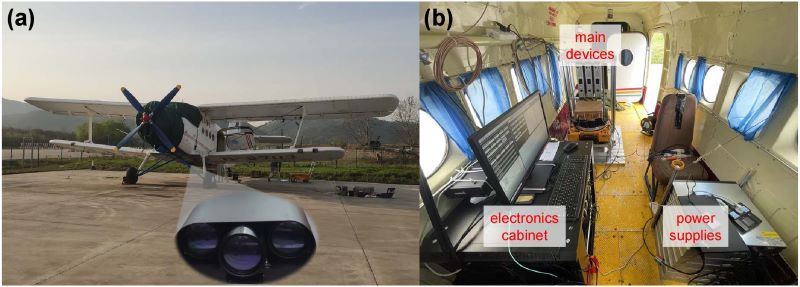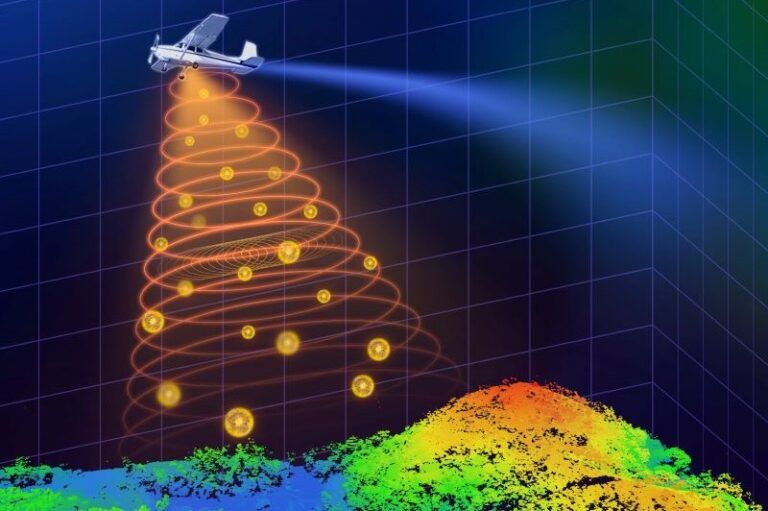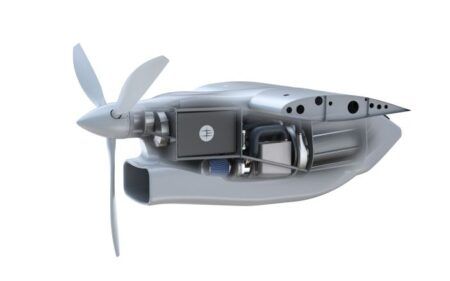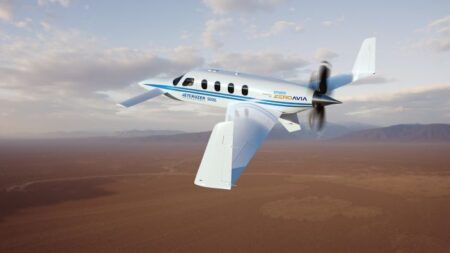Researchers have developed a single-photon airborne lidar system that can acquire high-resolution 3D images with a low-power laser, opening up applications such as environmental monitoring, 3D terrain mapping and object identification.
The researchers believe the advance could make single-photon lidar practical for air and space for the first time.
Researcher on the project Feihu Xu from the University of Science and Technology of China said, “Using single-photon lidar technology on resource-limited drones or satellites requires shrinking the entire system and reducing its energy consumption.
“We were able to incorporate recent technology developments into a system that in comparison to other airborne lidar systems employs the lowest laser power and the smallest optical aperture, while still maintaining good performance in terms of detection range and imaging resolution.”
The compact and lightweight single-photon lidar measures the time it takes laser pulses to travel to objects and back. The technique enables accurate 3D mapping of terrain and objects from aircraft even in challenging environments such as dense vegetation or urban areas.
“Our work has the potential to enhance our understanding of the world around us and contribute to a more sustainable and informed future for all,” said Xu. “Our system could be deployed on drones or small satellites to monitor changes in forest landscapes, such as deforestation or other impacts on forest health.
“It could also be used after earthquakes to generate 3D terrain maps that could help assess the extent of damage and guide rescue teams, potentially saving lives.”
Ground and air testing
As part of the research, which was published earlier this month in the journal Optica engineers conducted a series of tests to validate the capabilities of the system.
A pre-flight ground test confirmed the effectiveness of the technique and showed that the system was able to perform lidar imaging with a resolution of 15cm (6 in) from 1.5km (1 mile) away. Once they implemented sub-pixel scanning and 3D deconvolution, the researchers demonstrated an effective resolution of 6cm from the same distance away.
Daytime test flights using a small aircraft were conducted over several weeks in Yiwu City, Zhejiang Province, China. The tests revealed detailed features of various landforms and objects, confirming the functionality and reliability of the system in real-world scenarios.
The testing shows that the system cam achieve an imaging resolution that surpasses the diffraction limit of light when used with sub-pixel scanning and a new 3D deconvolution algorithm. They also demonstrated the system’s capability to capture high-resolution 3D images during daytime over large areas aboard a small plane.

Shrinking single-photon lidar
The single-photon lidar system works by capturing the reflection of laser pulses using sensitive detectors called single-photon avalanche diode (SPAD) arrays. The SPAD arrays enable more efficient detection of the reflected laser pulses so that a lower-power laser could be used. To reduce the overall system size, the researchers used small telescopes with an optical aperture of 47 mm as the receiving optics.
“A key part of the new system is the special scanning mirrors that perform continuous fine scanning, capturing sub-pixel information of the ground targets,” said Xu. “Also, a new photon-efficient computational algorithm extracts this sub-pixel information from a small number of raw photon detections, enabling the reconstruction of super-resolution 3D images despite the challenges posed by weak signals and strong solar noise.”
The team is now working to improve the performance and integrate the system on to a small satellite. The stability, durability and cost-effectiveness of the system also needs improving before it could be commercialized.





